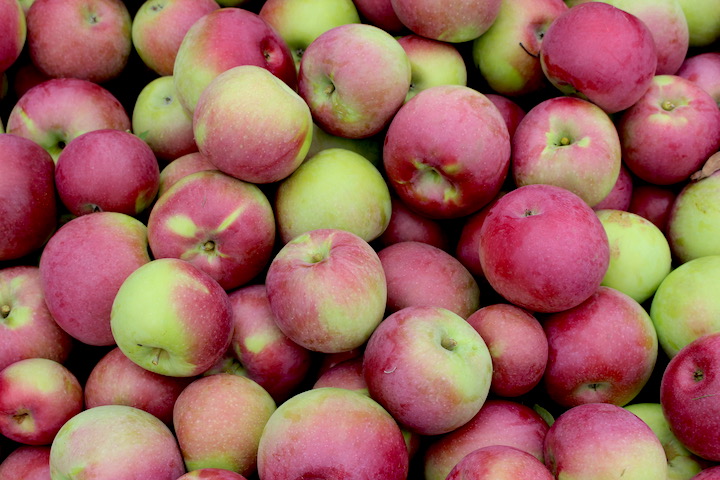
THE APPLE is an amazing food. It comes in all colors and shapes. It is extremely prolific, and it is grown around the world.
The apple is ancient — some varieties are centuries old — and continually reinventing itself, with new varieties discovered in nature or developed by apple breeding programs every year.
Apples are the stuff of legends, from ancient Greece to contemporary New York City, from William Tell and Sir Isaac Newton to the Beatles and an iconic computer.
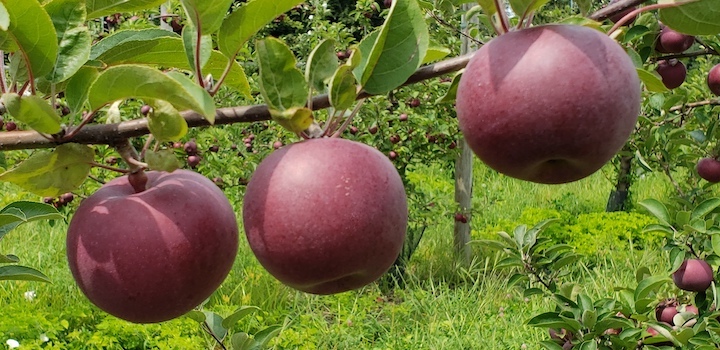
Rare as these distinctions are, what truly distinguishes the apple is its flavor and versatility.
Equally good eaten fresh or cooked, apples can be featured at any course of any meal, from breakfast to supper; paired with almost any food, from pears to peanut butter to pork chops; pressed into juice and imbibed as fresh cider, fermented into hard cider, distilled into applejack, ice cider, or wine, or further still, to vinegar.
Apple flavors run the gamut from sweet to tart, mild to spicy, with notes of banana, lemon, pear, pineapple, or strawberry, even nuts or tea! Apple textures range from mild and creamy to dense and hard.
Apples are nutritious, chock full of phytonutrients and antioxidants, and naturally sweet, with only 81 calories per apple. Applesauce can be substituted for butter or oil in many recipes.
There is no other food like the apple.
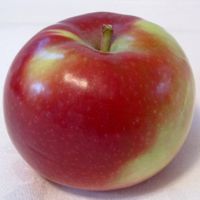
THAT BRINGS US to McIntosh, New England’s favorite apple. It is the quintessential apple in appearance, flavor, and usage.
Its classic round shape, covered in splashes of red and green, make McIntosh an apple icon.
McIntosh is an heirloom. Discovered in Canada in 1801, it entered the United States in Vermont in 1869, and it has flourished on New England’s rocky soils and cool nights ever since (many growers in the South and Pacific Northwest wish they could grow McIntosh).
McIntosh was the Honeycrisp before there was Honeycrisp: the most exciting new apple to reach the marketplace in generations. Its popularity soared in the 1930s, after the Baldwin and Northern Spy populations were decimated by a severe freeze in the winter of 1933-34.
Today, more than half of New England’s apple crop is McIntosh. Its fame is easy to understand.
McIntosh is considered the most aromatic of apples.
It is supremely juicy. Its flesh is pleasing to the palate, crisp but soft.
Its high acid and sugar content make it an excellent cider apple, too.
When people think of what an apple tastes like, it is often McIntosh (or one of its offspring, including Cortland, Empire, and Macoun) for a rich, complex taste that is both tangy and sweet.
McIntosh is a great cooking apple. Its flavor and aroma are superb in pies, crisp, and pastries, by itself or mixed with other varieties for greater firmness.
McIntosh require care. If mishandled, they bruise easily. Macs can be enjoyed year-round if kept cold – see our storage tips.
It’s exciting to sample rare heirlooms, many of which have outstanding qualities of their own. It’s fun to try new varieties, although many will not endure, perfectly fine but lacking distinction.
If it has been awhile since you tried a Mac, now is an ideal time to become reacquainted with this exceptional apple!
* * *

THE BIG E set an attendance record this year, with more than 1.6 million visitors over its 17-day run in West Springfield, Massachusetts, which ended Sunday.
From our booth in the Massachusetts Building, we had beautiful apples from Brookfield Orchards, Carlson Orchards, Clarkdale Fruit Farms, Cold Spring Orchard, University of Massachusetts, Phoenix Fruit Farm, Pine Hill Orchards, and Ragged Hill Orchard, plus apple cider drinks and plenty of baked goods.
For varieties, we had Akane, Cortland, Empire, Gala, Gravenstein, Ginger Gold, Honeycrisp, Jonagold, McIntosh, Macoun, Paula Red, and Silken apples.
We talked apples and passed out literature, and we had lots of help along the way.
Here are some scenes from this year’s fair.
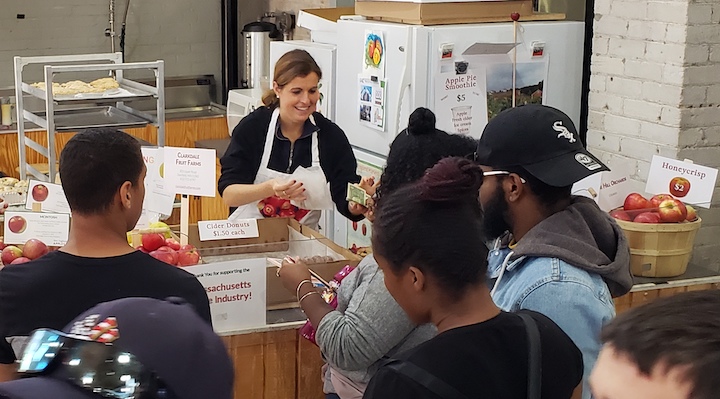

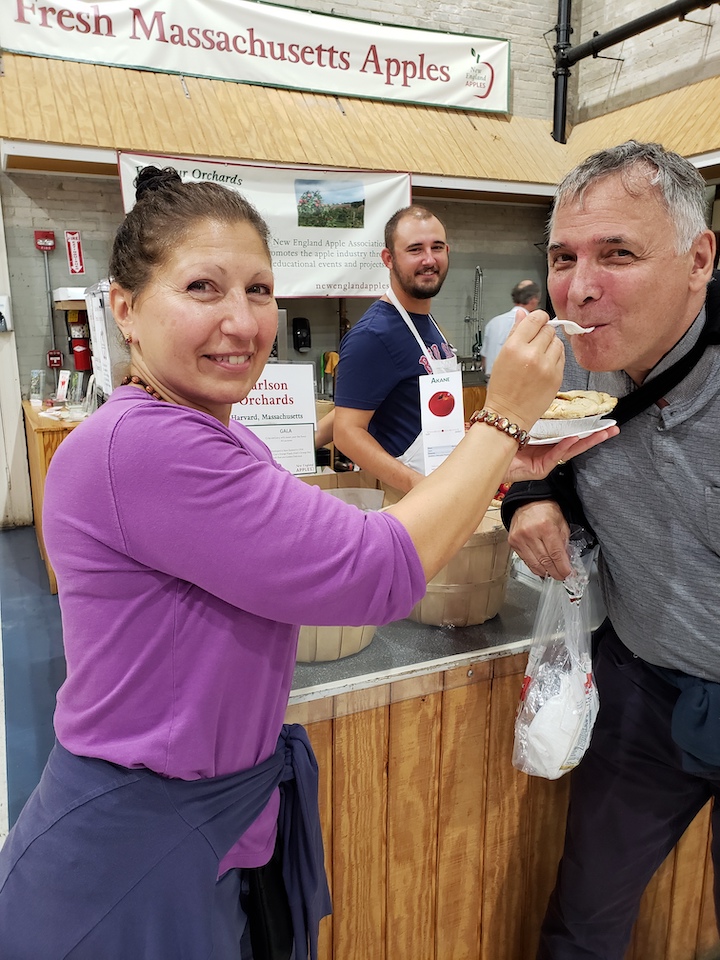
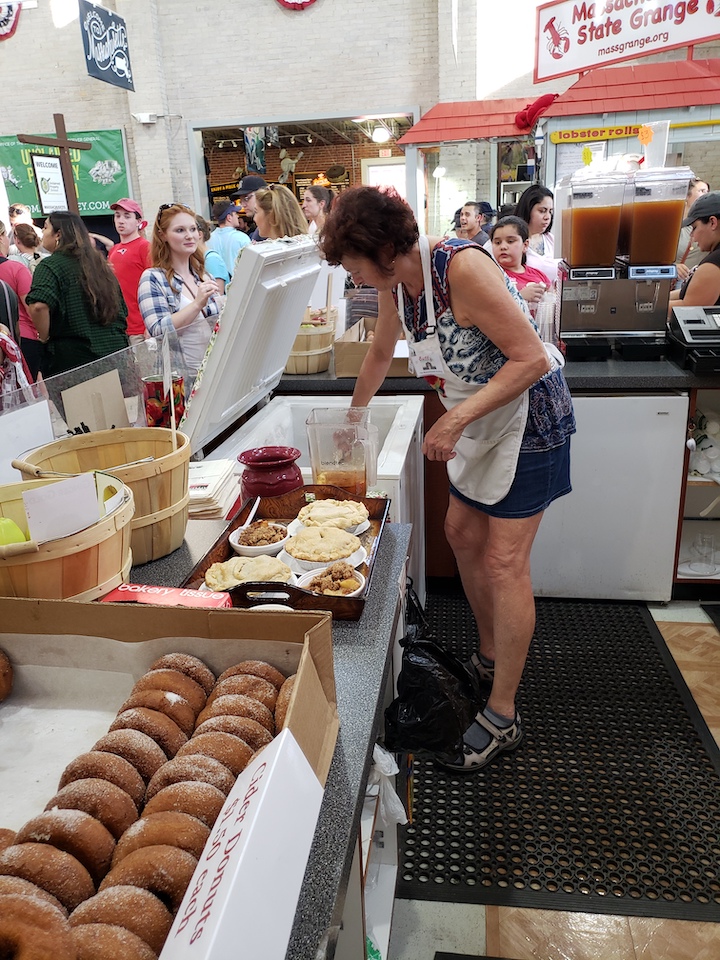
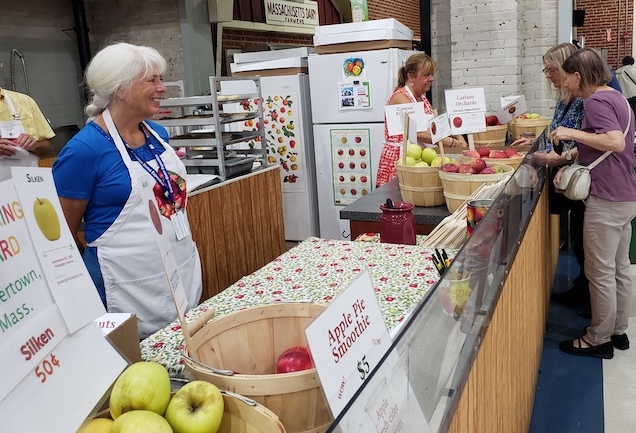

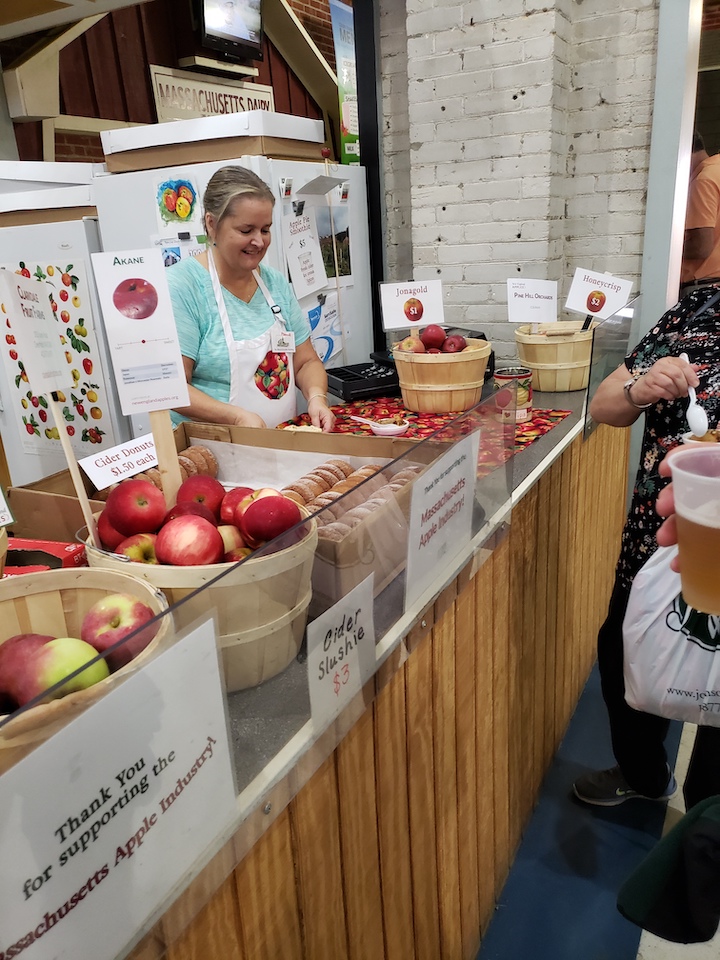

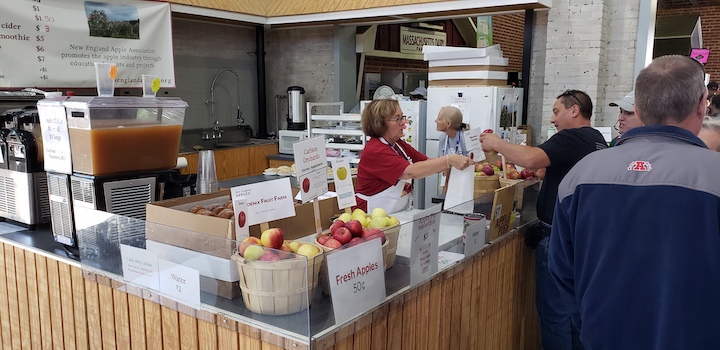
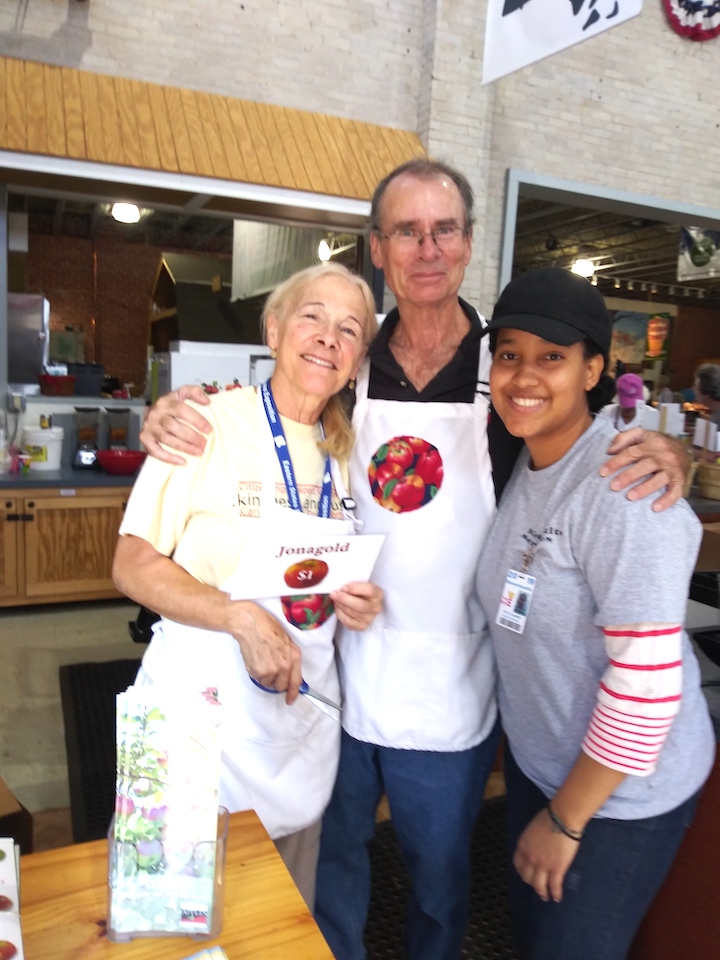

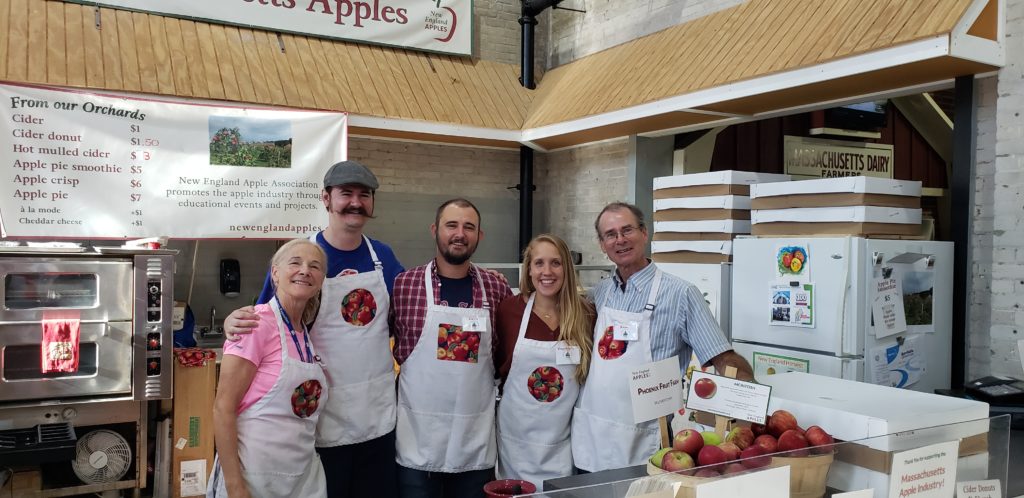
4 Comments
Leslie Mason
What a great refresher course on the mighty Mac, and fun series of pics from the Big E. Glad it was so successful!
Russell Powell
Thank you, Leslie! It’s all apples all of the time these days, and I’m loving it (as long as I survive it!).
Robert
Great photojournalism. I can feel the passion and enthusiasm.
Russell Powell
Wow! Such a nice compliment coming from you. Many thanks. The fair is grueling and hard to explain to someone who is not there, but I’m glad the photos captured some of the intimacy and joy of this strange experience!